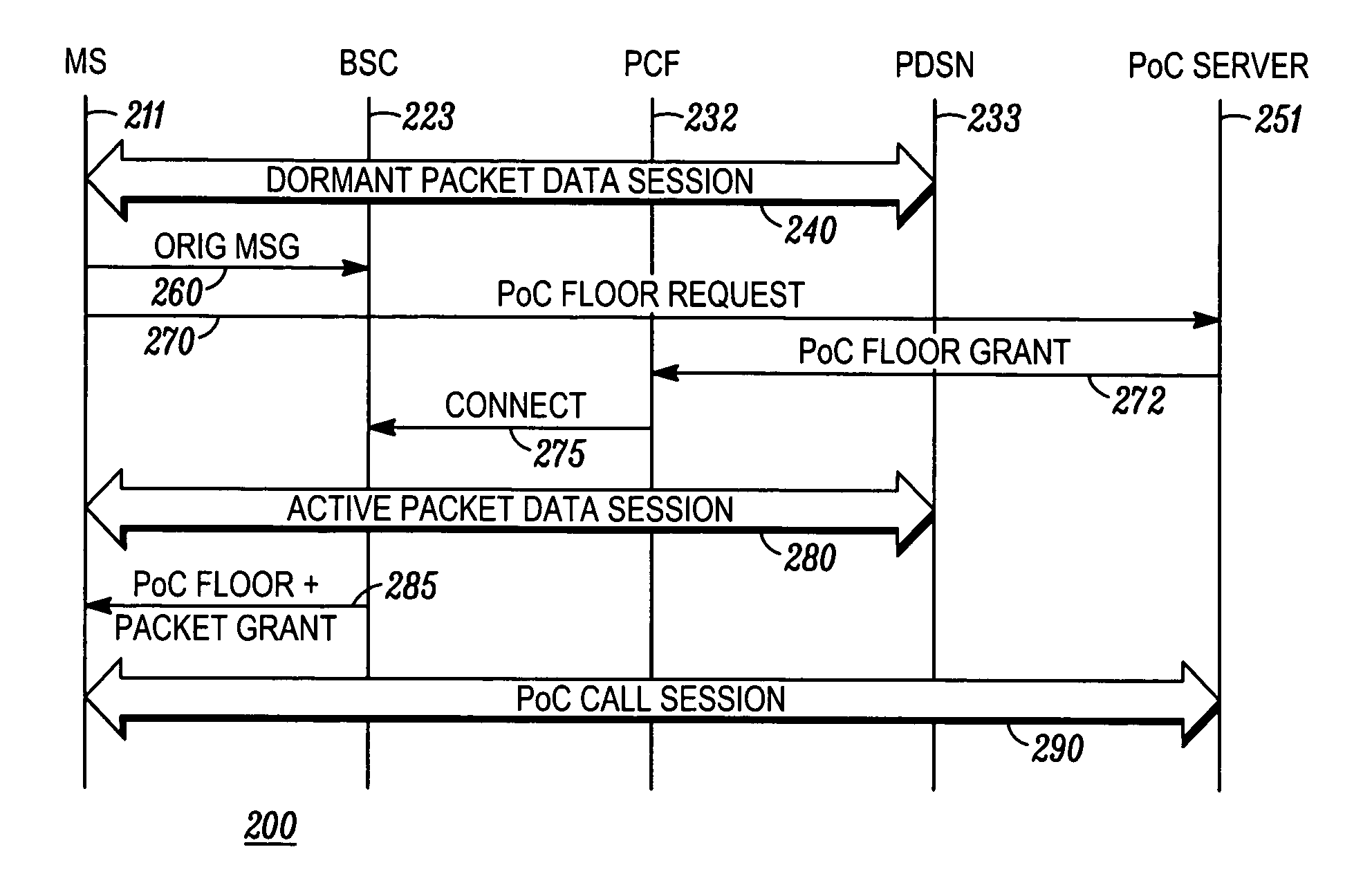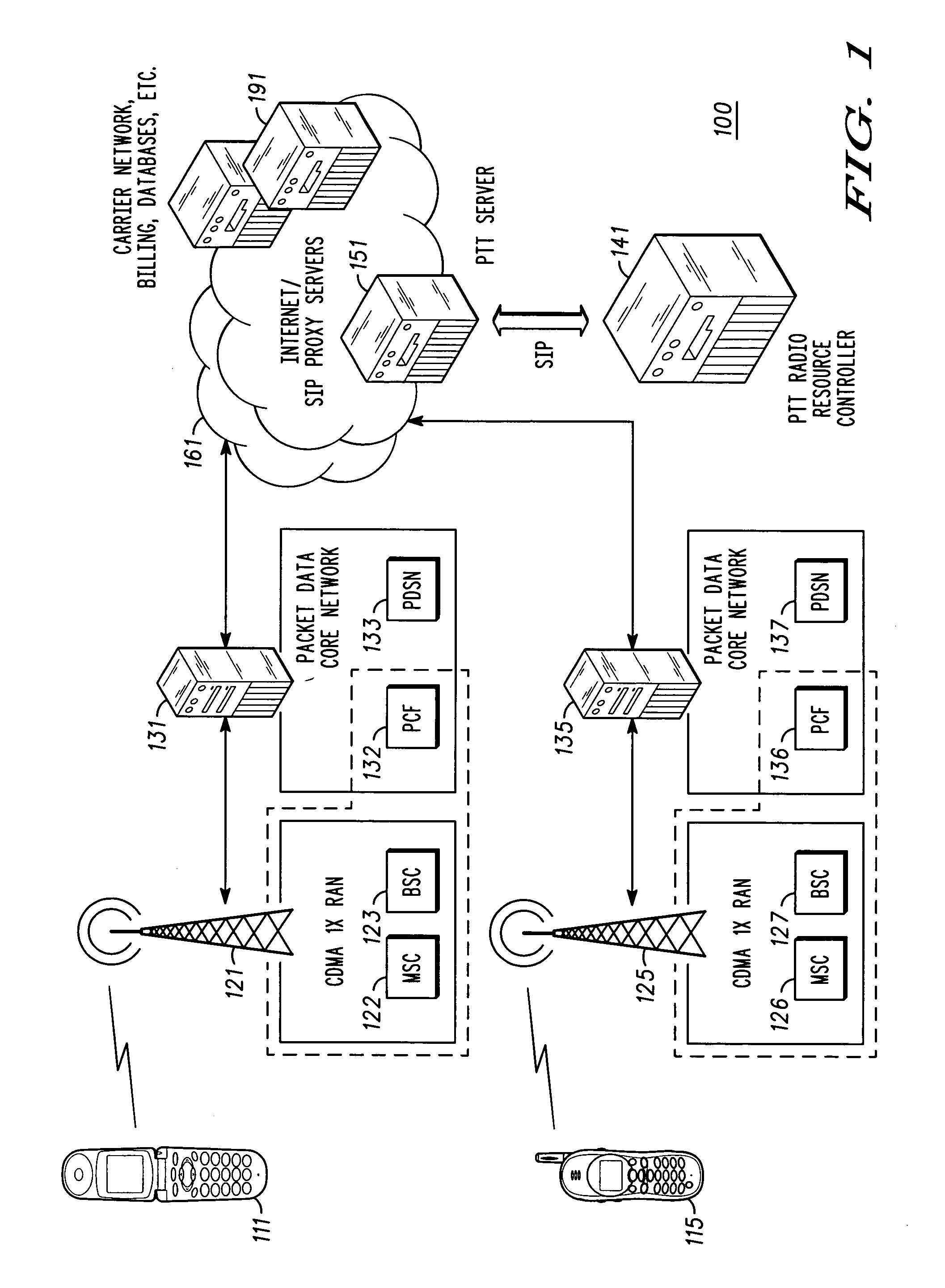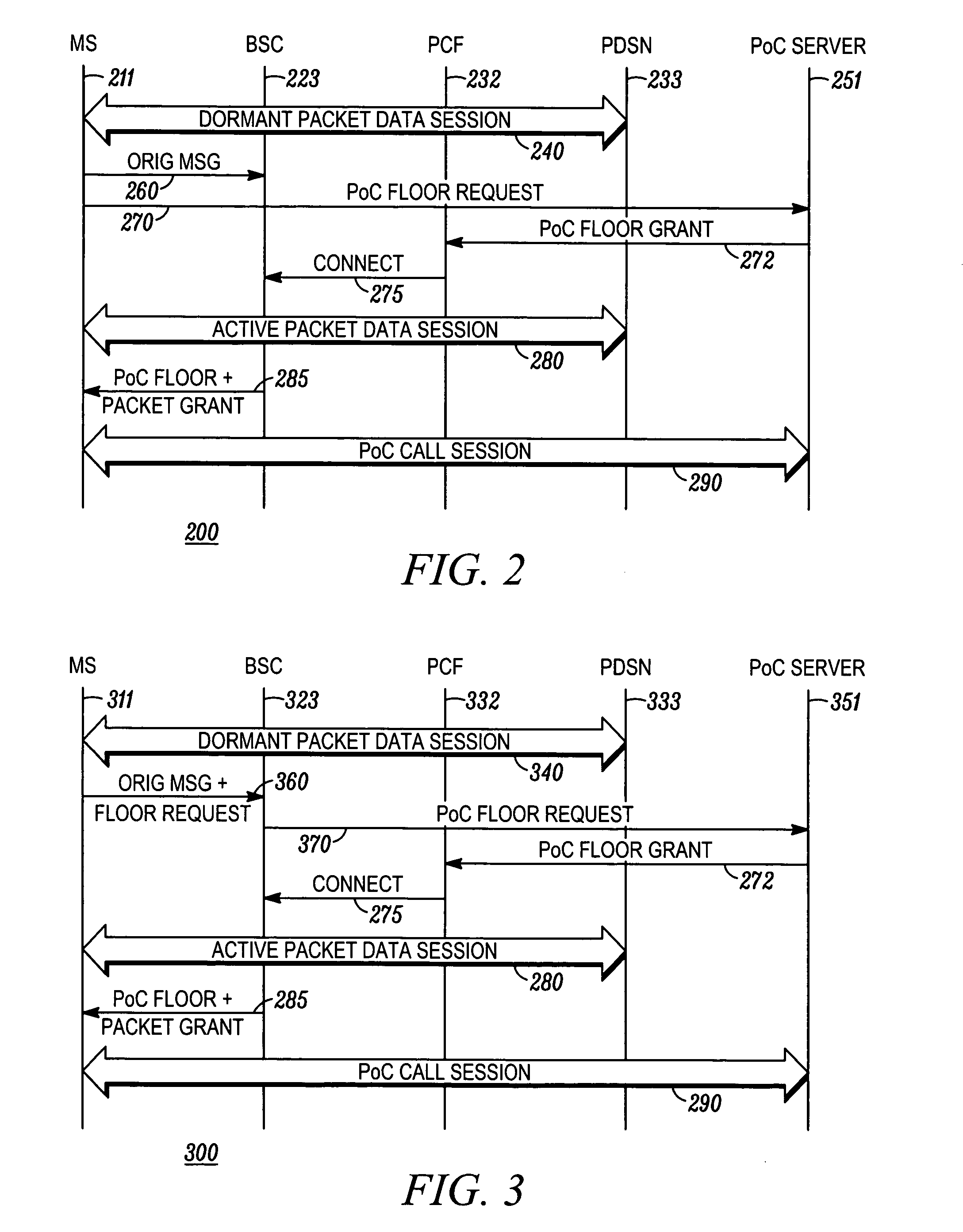Push-to-X over cellular coordinated floor and packet scheduling
a technology of coordinated floor, which is applied in the field of push-to-x (ptx) service in a cellular telephone communication system, can solve problems such as time delay and waste of network capacity
- Summary
- Abstract
- Description
- Claims
- Application Information
AI Technical Summary
Problems solved by technology
Method used
Image
Examples
first embodiment
[0019]FIG. 2 shows a sample signal flow diagram 200 for setting up a push-to-talk call over the Third Generation (3G) Code Division Multiple Access (CDMA 1×) system 100 shown in FIG. 1 according to a Vertical line 211 represents signaling to and from an originating communication device (MS), such as communication device 111 shown in FIG. 1. Vertical line 223 represents signaling to and from a base station controller (BSC), which can be implemented as a component of a radio access network such as the CDMA 1× radio access network 121 shown in FIG. 1. Vertical line 232 represents signaling to and from a packet control function (PCF), which can be implemented as a component of a radio access network, such as the RAN 121 shown in FIG. 1. Vertical line 233 represents signaling to and from a packet data serving network (PDSN), which can be implemented as a component of a packet data core network, such as the packet data core network 131 shown in FIG. 1. Vertical line 251 represents signal...
second embodiment
[0030] The remaining signal flows of FIG. 3 have reference numbers that are identical to those in FIG. 2 and represent similar messages and sessions previously described with reference to FIG. 2. If a called PoC communication device desires to participate, the user presses a PTX switch, which triggers a PoC floor request such as message 270 shown in FIG. 2. At this point, the PoC floor request is generally in the form of a RTCP message that is transported using an origination message or a short data burst at the radio layer. (Using a SIP message as a PoC floor request is inappropriate in this situation, because the call session has already been set up.) The signal flow for the new originating communication device continues as previously described in FIG. 2. As in FIG. 2, the second embodiment delays the active packet data session until after a PoC floor is granted by the PoC server 351. An additional savings in uplink packet data capacity occurs when the two messages 260, 270 of FIG...
third embodiment
[0035] Due to the layered structure of a message in this system, a BSC 523 cannot easily determine whether a message is a PoC floor control message or whether a PoC floor control message is specifically a PoC floor grant message. In other words, a BSC is not geared to inspect the area of a message that indicates that the message is a PoC floor control message or more specifically a PoC floor grant message. In this third embodiment, the traffic flow template message 545 instructs the PDSN 533 to inspect incoming PoC floor control messages for a value representing a PoC floor grant and then to modify the PoC floor control messages that contain a PoC floor grant so that the PCF 532 and BSC 523 can more easily identify that a message as a PoC floor grant message. In other words, modify the Generic Routing Encapsulation (GRE) header or payload to indicate a PoC floor grant.
[0036] When a user presses a PTT switch to request service for a PoC call, a PoC origination message 560 is sent fro...
PUM
 Login to View More
Login to View More Abstract
Description
Claims
Application Information
 Login to View More
Login to View More - R&D
- Intellectual Property
- Life Sciences
- Materials
- Tech Scout
- Unparalleled Data Quality
- Higher Quality Content
- 60% Fewer Hallucinations
Browse by: Latest US Patents, China's latest patents, Technical Efficacy Thesaurus, Application Domain, Technology Topic, Popular Technical Reports.
© 2025 PatSnap. All rights reserved.Legal|Privacy policy|Modern Slavery Act Transparency Statement|Sitemap|About US| Contact US: help@patsnap.com



